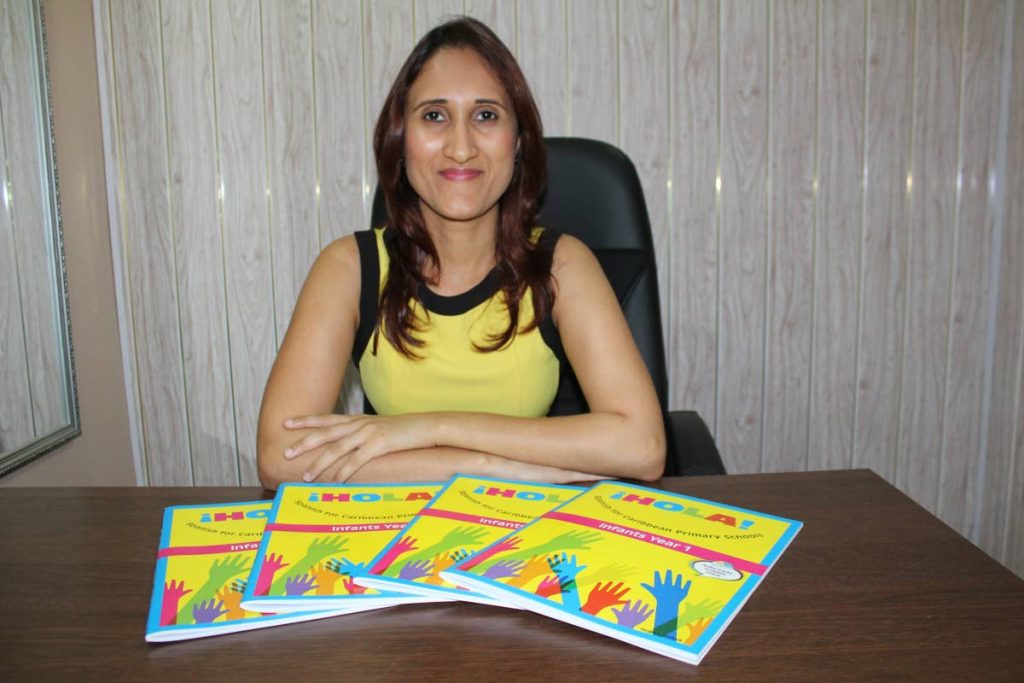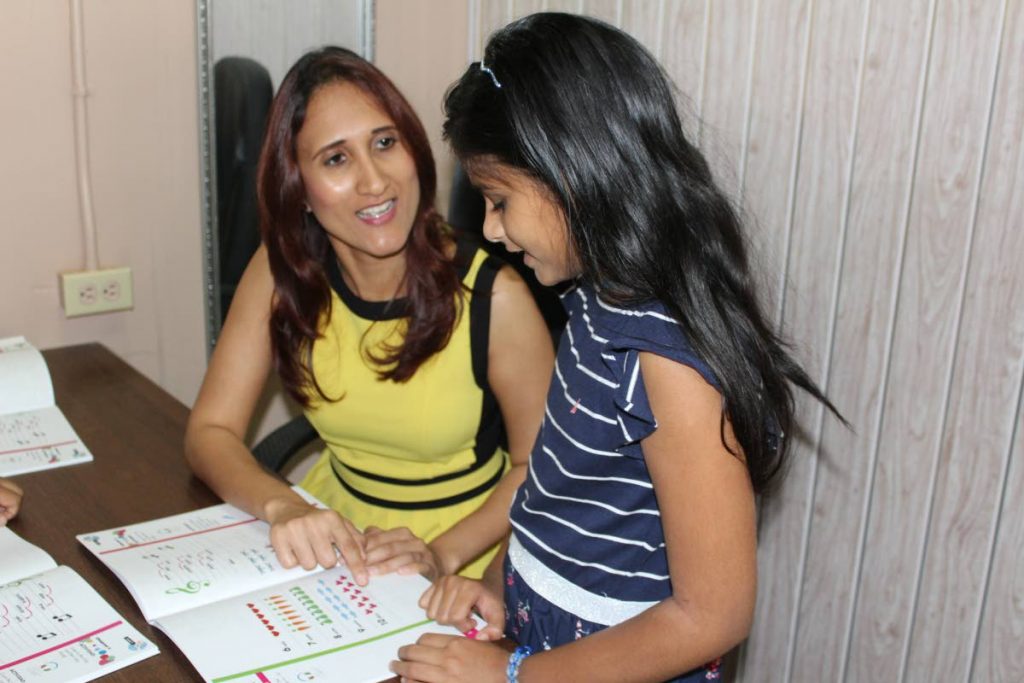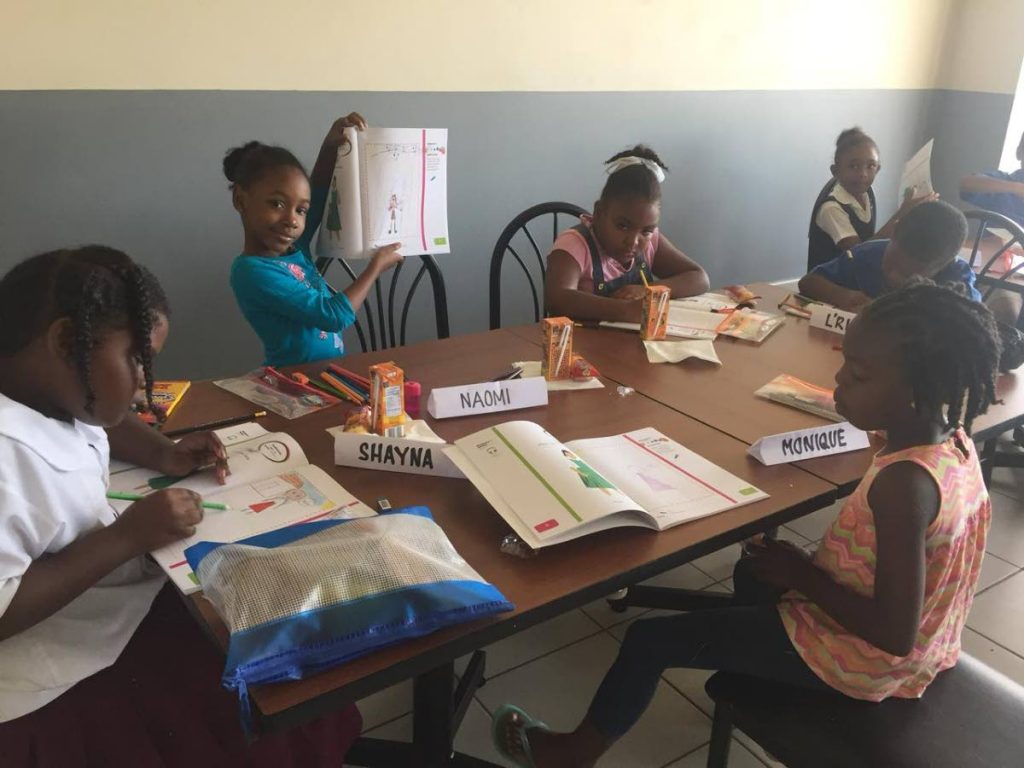¡Hola! Spanish for children

Darcelle Doodnath saw a gap in the education system and decided to fill it. The 32-year-old Spanish language teacher at Naparima College in San Fernando felt that in primary schools, especially during the formative years, children were not given the necessary clear and comprehensive instruction in Spanish – despite it being a requirement on the Ministry of Education’s primary school syllabus.
So, in 2017, on her own she created her own publishing house, Daymark Distributors Ltd, to market ¡Hola!: Spanish for Caribbean Primary Schools: Year 1 – written by her as a solution to get children, but more importantly, teachers, excited about learning and teaching Spanish.

“Spanish is on the curriculum from infants up to standard five. In the higher levels (standards four and five) it takes a backseat to the Secondary Entrance Assessment examination preparation. But teachers generally are not trained and many have no experience with Spanish. That makes them apprehensive to teach it, especially regarding pronunciation,” she told Business Day.
¡Hola!, therefore, comes with audio tracks and pronunciation guides that are available for free download on the publisher’s website, daymarkdistributors.com, to help teachers who may be unsure, helping them and their students feel more engaged in the learning process.
The book is based on the actual Ministry of Education infants syllabus for Spanish. All the content, Doodnath said, is what they would learn over the school year.

“We are supposed to become a country that speaks two languages (and education should) be geared towards bilingualism, especially given the climate of the country right now. There is the need for us to build that skill in children from a young age – given our proximity to Latin America, it will be an asset as they get older. And at the ages to which this book is targeted – four, five and six-year-olds – it’s when they are most receptive to learning a language, so to get introduced to Spanish at this age will be most beneficial to them.”
Doodnath has a bachelor’s degree in Hispanic language and linguistics from Brown University in the US, and also received a diploma in teaching methodology of Spanish as a second language from a university in Santiago, Chile. She is currently pursuing her diploma in education at UWI, specialising in foreign languages. She has taught Spanish language for the last 11 years and, she says, the tenets of teaching a foreign language is the same across the board, regardless of age.

“You have to focus on the skills of speaking, listening, reading and writing. All I did was edited my strategies for this age group. The book has songs that they can learn, as well as types of activities that are geared towards that age group – tracing, colouring and drawing. It’s the same applications I use in my classroom.”
She also had the book reviewed by two Spanish language and education experts.
Producing the book was the easy part. The real challenge is marketing – especially since the buy-in from the Ministry of Education to Spanish language teaching in primary schools has been so lukewarm.
As the author, publisher and distributor of the book, Doodnath has her work cut out for her. She has a relationship with Unique Bookstores, currently the only retailer. She’s also made visits to primary schools in south Trinidad, especially in San Fernando and Penal, to pitch the book directly to teachers and principals to encourage them to incorporate it and Spanish into their teaching schedules.
It’s hard work she acknowledges, although she believes it’s much easier for her to have published the book herself and control the distribution aspect, instead of partnering with a larger more established publishing company.
“A lot of teachers confessed that they don’t do as much Spanish as they are supposed to because they are not trained. So, they tend to shy away from using a Spanish book at that level. It is not a priority for them. But they all seemed receptive to the possibility.”
Doodnath has used the book herself, volunteering within her community at an after school programme organised by the Siparia Regional Corporation for 17 children. “I went every Tuesday to teach an hour-long class. The feedback from the kids was amazing. They were excited to use it, excited to come to class, excited to use their colour pencils and do the activities. So, for me that was very encouraging to see the reactions of the students. But it is still difficult to infiltrate the markets of the school to get it into the system for teachers to be confident to use.”
Part of the issue is the administration.
The Ministry of Education has a secretariat for the implementation of Spanish, which is supposed to be in charge of promoting Spanish as a subject in schools. The focus, though, is on secondary schools. Even the curriculum supervisors designated for secondary schools also have the added burden of overseeing primary schools, so they have double work. And there is only one person in each educational district with responsibility for Spanish.
“I’ve sent a copy of the book to a representative at the ministry’s secretariat with the intention of getting ¡Hola! on to the syllabus, especially in lower socio-economic districts,” Doodnath said. “So far, I’ve heard nothing back. And I don’t know what else they (the ministry) are doing on their own.”
Doodnath isn’t – at least in the short term – in it for the profit, but rather wants to encourage more Spanish language training and at a younger age in TT’s schools.
“There’s no immediate returns. I don’t expect to make any money at all in the first three years, not unless the book gets on the list for the ministry.” Even if it isn’t, parents who are interested in getting their children into Spanish can buy and use the book on their own.
Despite the challenges, Doodnath still believes it’s worthwhile, though.
“Learning a second language not only makes you more marketable, there are biological benefits. People who speak a second language have better concentration and better memory. You’re also learning a culture so it offers you a wider perspective of your world. That’s what we need, more tolerance and we need to open ourselves up more to people who are different from ourselves.”


Comments
"¡Hola! Spanish for children"